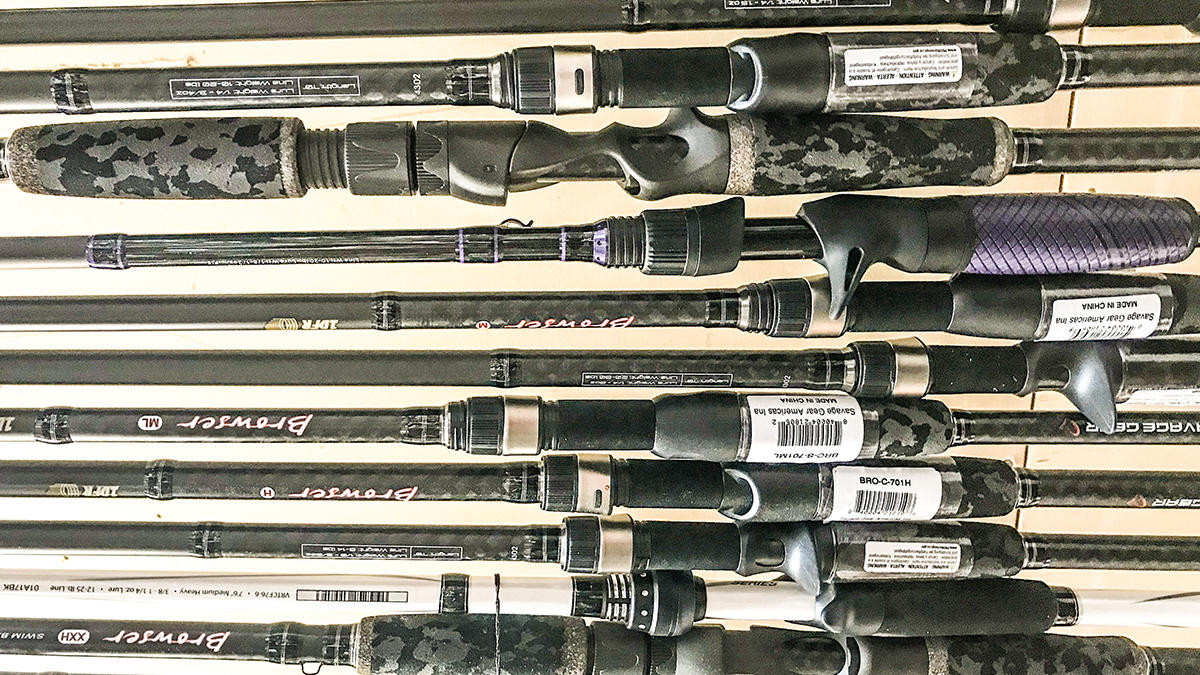My wife and I recently bought and remodeled a house out at the lake. She liked the big kitchen and the previous owner had built an 800 square foot shop behind the house that fit my bass boat perfectly—so we jumped at the opportunity. We were signing offer sheets six hours after the house was listed.
The old man who used to live here was a woodworker and that big shop was designed specifically for woodworking projects. Turning it into a fishing shop was a monster overhaul that took me all winter, but there’s one thing I kept in that shop: His old ceiling-mounted lumber racks.
They’re darn-near perfect for fishing rod storage, so I wanted to share the design with everyone. Not only will it free up all of your floor space, but you’re able to sit in your boat and switch out rods without constantly hopping in and out.
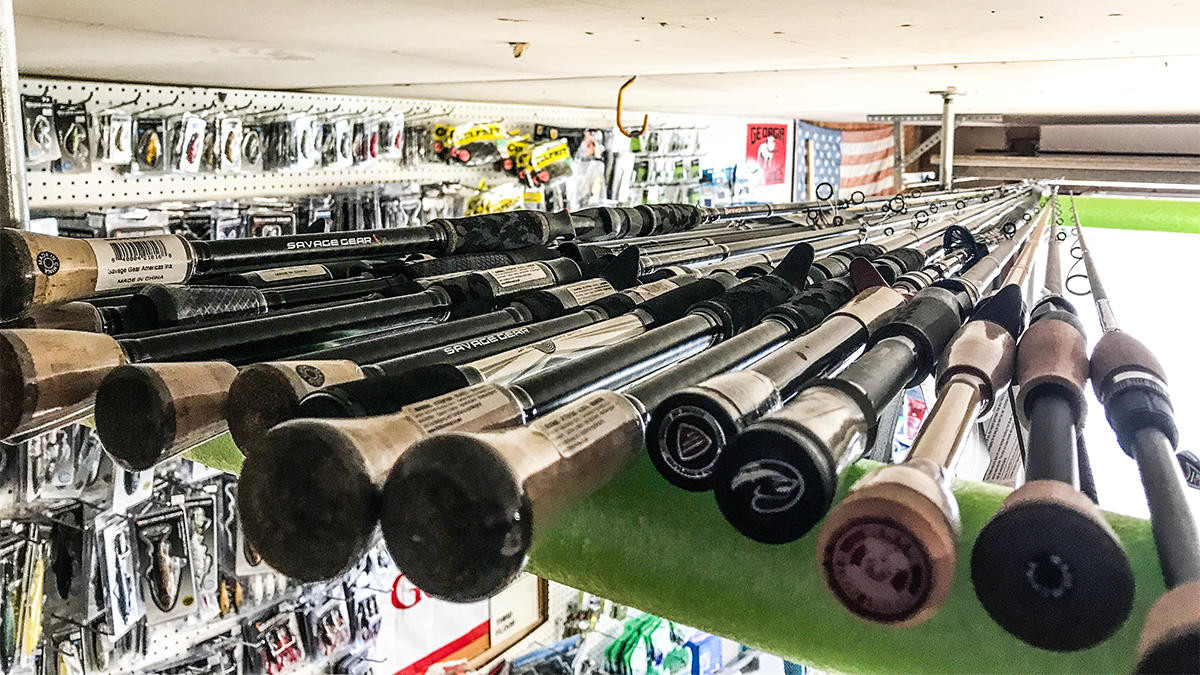
Why mount it on the ceiling?
It’s tempting to go buy pre-made rod racks, screw them to the wall and call it good. But I wanted all the wall space I could possibly get in my shop. I mounted pegboard to the walls and I have my fishing lures and other gear hanging for quick and easy access.
Also, like I mentioned earlier, this is a really convenient system if you store your boat in a garage. I can stay in my boat and switch rods out without jumping in and out. If I have a striper trip coming up, I can hop in my boat one time, switch all the rods out and I’m good to go in a matter of minutes.
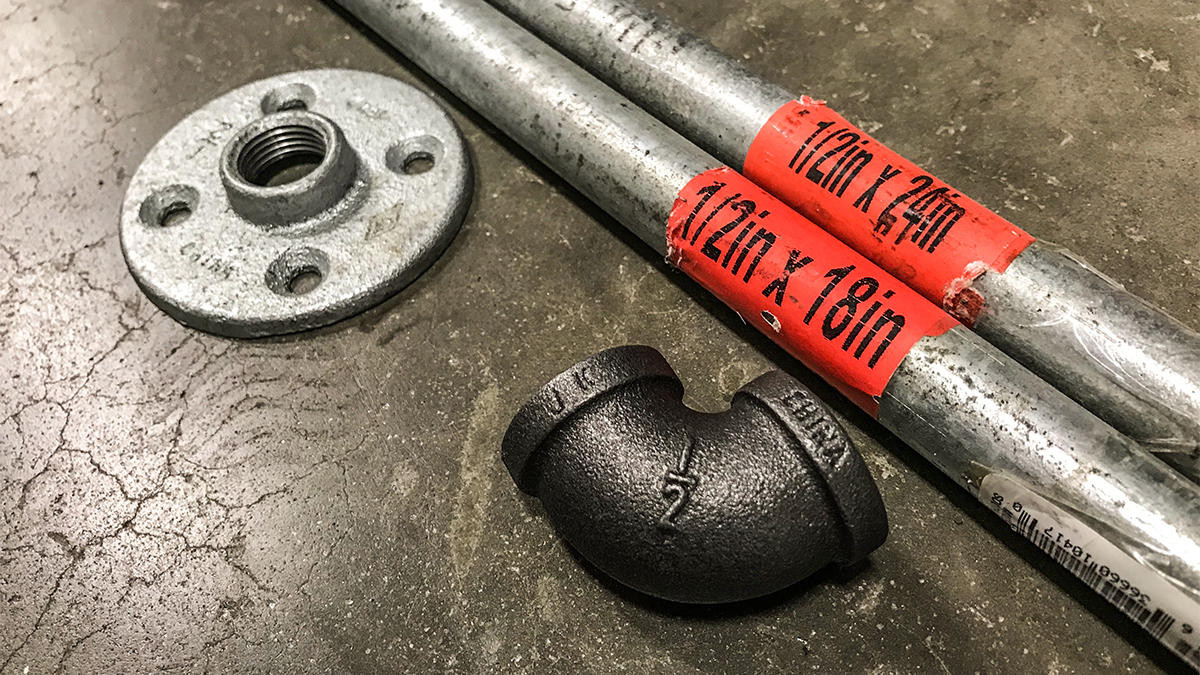
What you’ll need
With just a quick trip to the hardware store, you’ll should be able to purchase your supplies in one stop. In addition to these supplies, you’ll also need to keep an impact driver, stud finder and some long screws handy.
- (4) 1/2-inch galvanized floor flanges
- (2) 1/2-inch x 24-inch threaded galvanized pipe
- (4) 1/2-inch 90-degree galvanized elbow fittings
- (4) 1/2-inch x 18-inch threaded galvanized pipe
- (1) 4-foot pool noodle
Important note: The 18-inch threaded pipe will be your vertical pieces. If you store a boat in your garage with any type of shallow-water anchor, make sure they will clear 18 inches. If not, there are several other length options available at most hardware stores. My Power-Poles clear my rod rack by less than 1/2 inch.
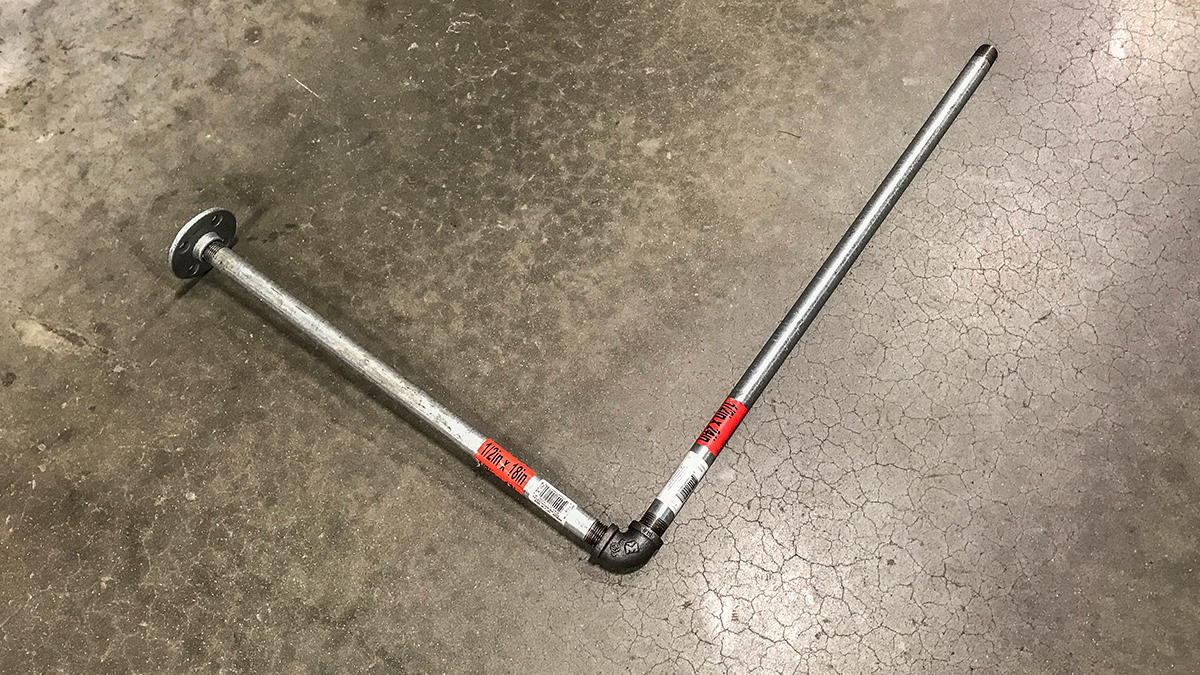
Put everything together before mounting the bases
Also, it’s a good idea to go ahead and put everything together before mounting your bases. Screw your 18-inch pipe into the floor flanges, screw your elbow fittings onto the 18-inch pipe and connect the two elbows with your 24-inch pipe. It’s much easier to put it together on the ground than on a step ladder.
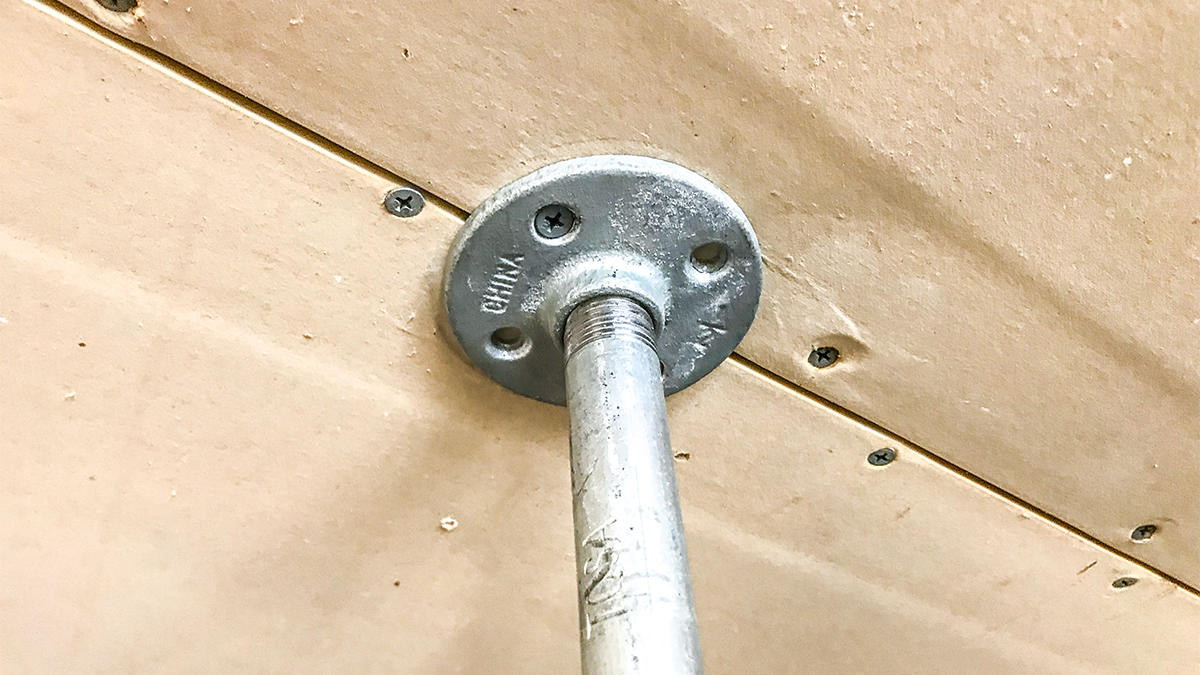
Find the beams and mount the bases
With an inexpensive stud finder, you can find your ceiling beams quickly. This is where you’ll want to mount your galvanized floor flanges-they’re essentially your bases for the rod rack. Don’t try to mount them into straight drywall. They may seem sturdy but the screws will rip out when any weight is added to the rack. It’s imperative to find the beams to create a solid structure.
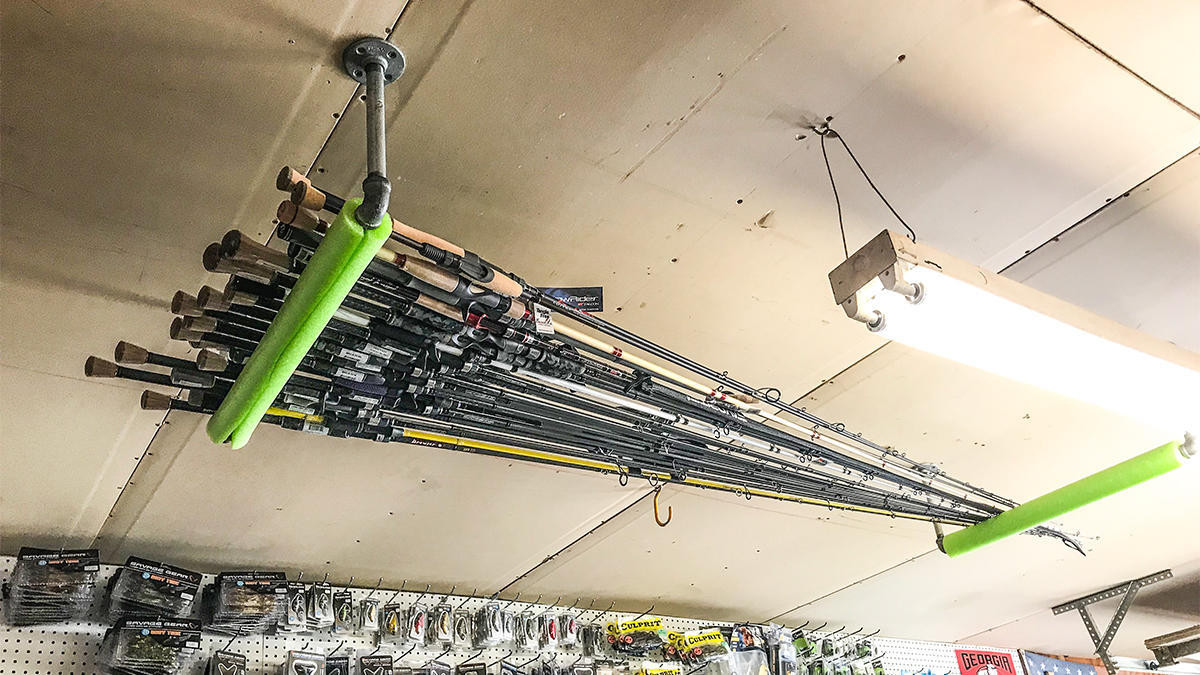
The length of the rod rack is up to you
The two structures for my rod rack are about 5 1/2 or 6 feet apart. To be honest, I just kind of eyeballed this part. The shortest fishing rod I use is a 6-foot, 10-inch rod for the most part. So I needed the span to be short enough to fit that length. You also want them close enough so that your rods, when stored, don’t have a bend in them.
But again, just make sure each base is screwed into a beam.
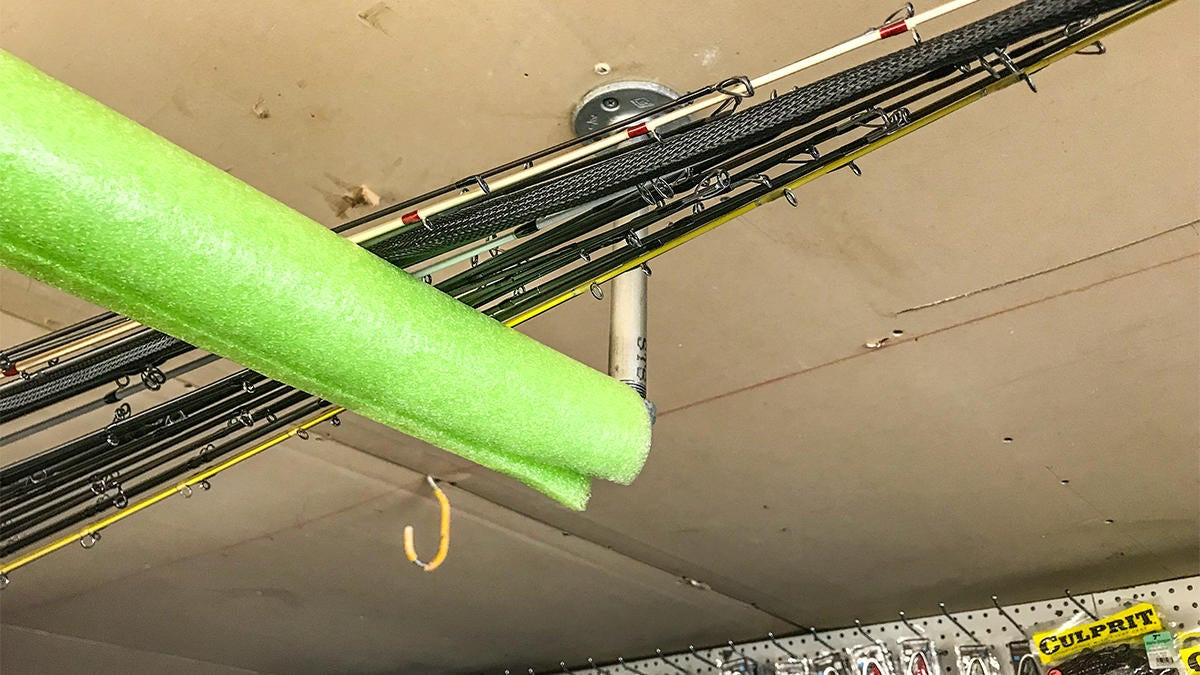
Don’t forget the pool noodle!
I’ve actually covered the horizontal 24-inch pipes with pool noodles. I didn’t do this at first and it wasn’t a huge deal, but after clanking a few of my line guides on galvanized pipe, I decided to be safe and add the pool noodles. I paid a whopping $1.07 for mine and it’s totally worth it.
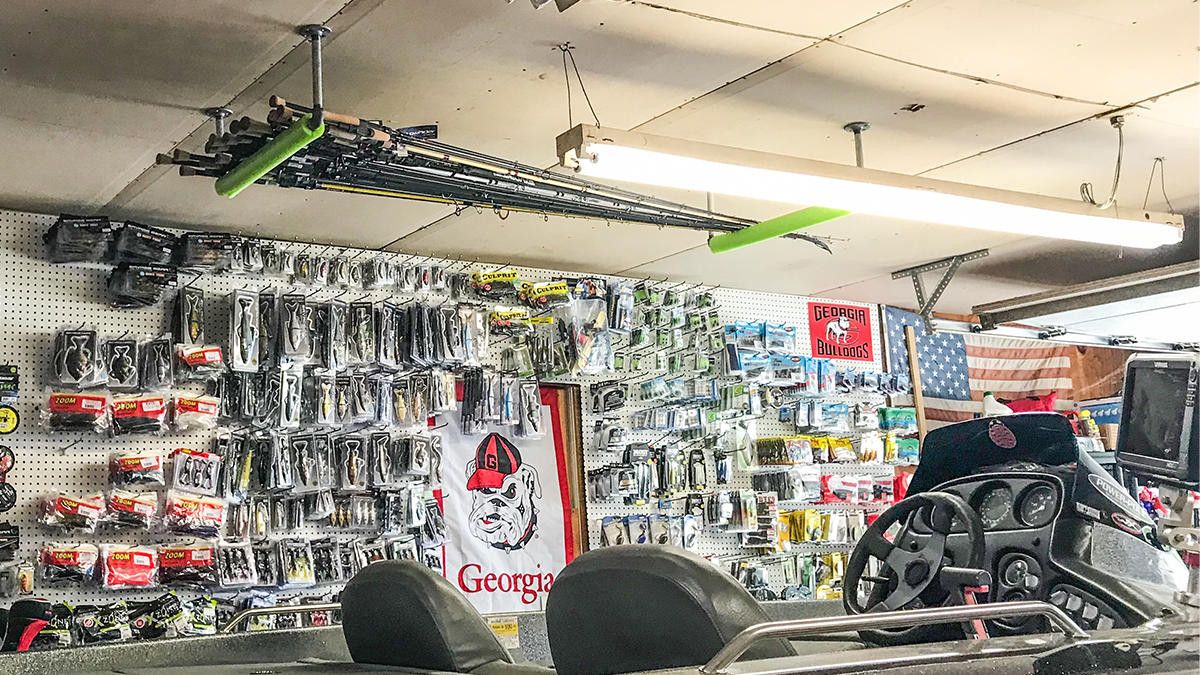
Final thoughts
This certainly isn’t the only way to store fishing rods, but it’s one that fits well in my shop and works well for me. Wired2fish staffer Ryan DeChaine filmed a helpful video that shows his preferred method in his shop.
This method, however, was something pretty neat that I mistakenly ran across and thought a few guys might find it helpful. It has certainly helped me stay organized and efficient when rigging tackle in my shop.


